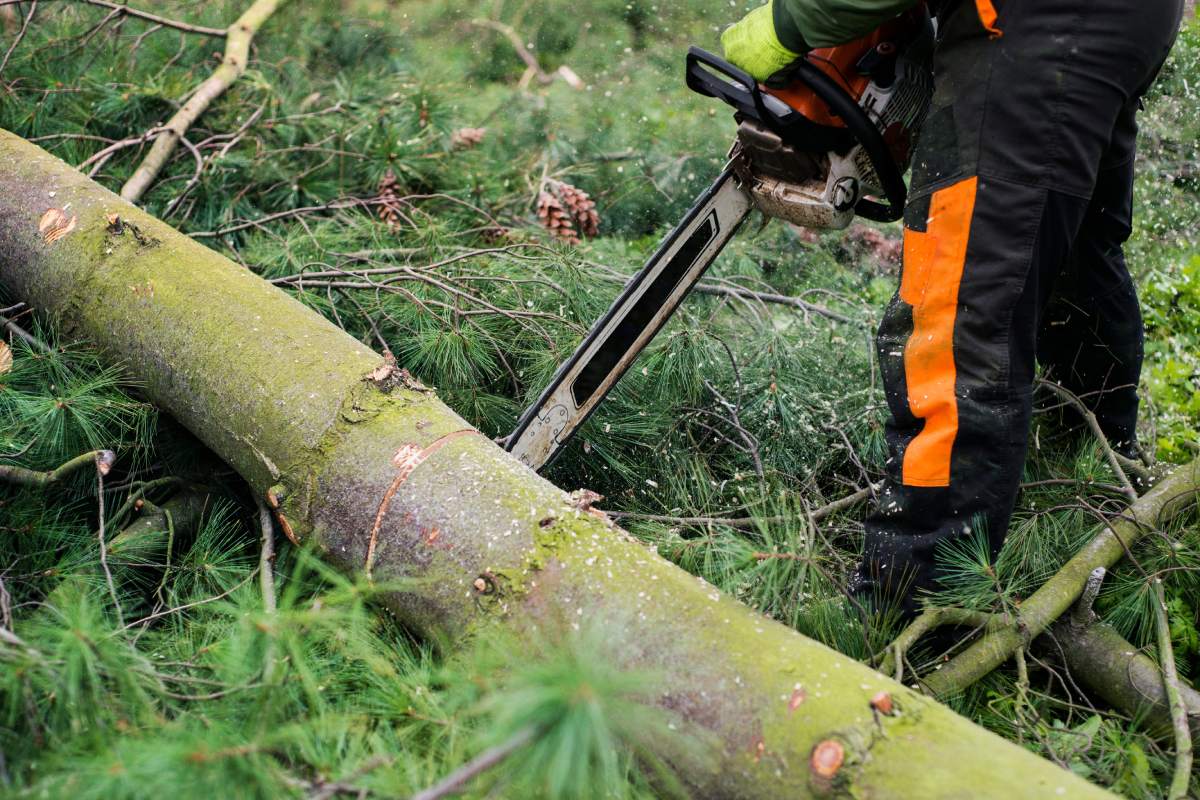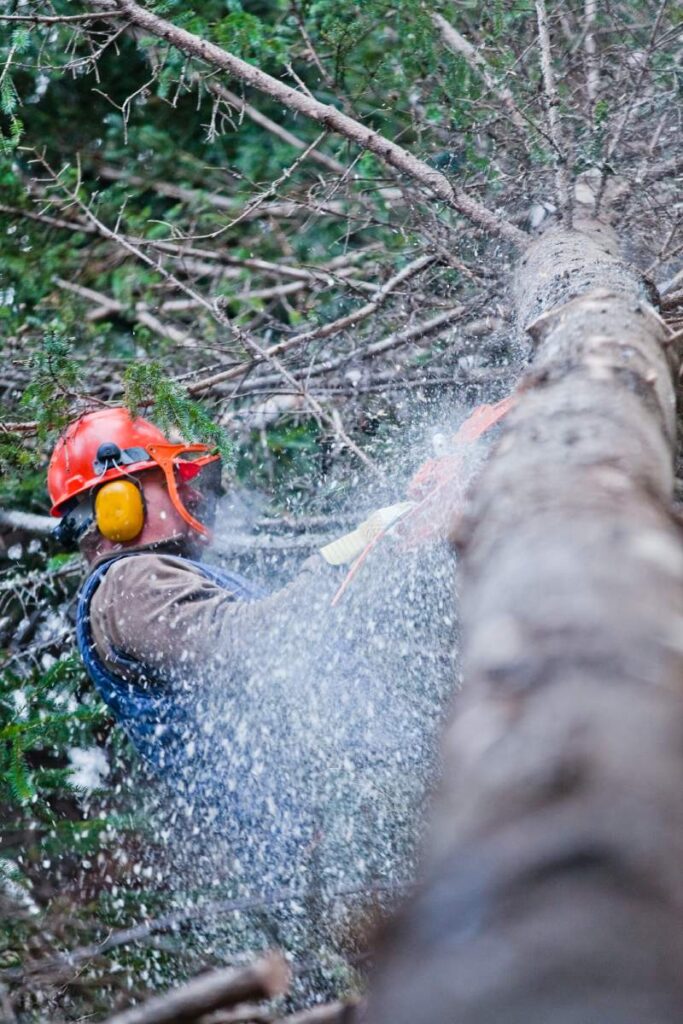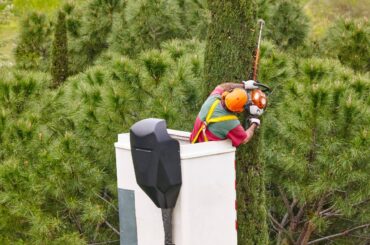Trees are vital components of our environment, contributing to air quality, providing habitats for wildlife, and enhancing the beauty of our landscapes. However, there are times when removing a tree becomes necessary, whether due to health concerns, safety risks, or space constraints.
Before making this significant decision, it’s crucial to understand the implications and ensure that cutting down the tree is truly justified. In this article, we’ll explore the key factors to consider before removing a tree, the reasons why some tree species are protected, and the ethical approach to tree care.
Related article:
When You Should Cut a Tree Down?
Cutting down a tree is a significant decision and should be approached with care. Here are some key points to consider when determining if it’s time to cut a tree down:
1. Tree Health
Dead or Dying Trees: If a tree is dead or shows signs of severe disease or pest infestation, it’s often best to remove it. Look for signs like a lack of leaves or needles, cracked bark, or rotting wood. These issues can weaken the tree, making it a safety hazard.
Fungal Growth: Mushrooms or fungi growing around the base of a tree or on its trunk can indicate internal decay. This can compromise the tree’s structural integrity, making it unsafe.
Leaning: Trees that lean significantly might be suffering from root damage or disease. If a tree has recently started leaning or if it leans excessively, it could be a sign that it’s unstable and may need to be removed.
2. Safety Concerns
Proximity to Structures: Trees close to homes, power lines, or other structures can pose a risk if they fall. Overhanging branches can also cause damage to roofs or power lines. Regular pruning might be an option, but if the tree is too close and poses a significant risk, removal might be necessary.
Hazardous Branches: Dead or weak branches that hang over areas where people walk or where vehicles are parked can be dangerous. If pruning these branches is not sufficient, cutting down the entire tree might be safer.
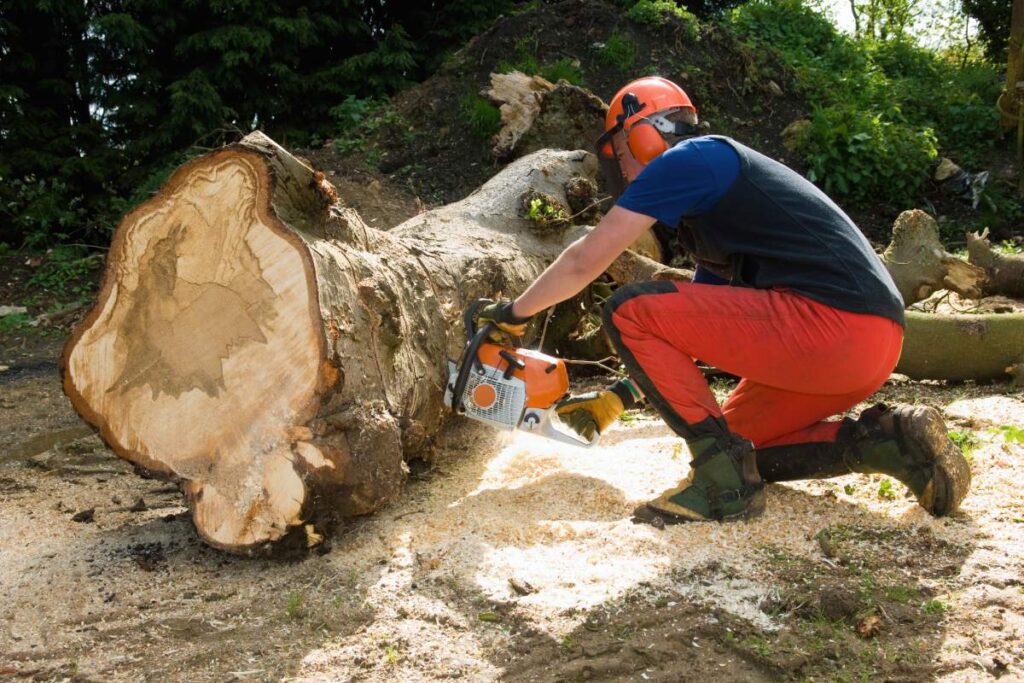
3. Tree Size and Space
Overcrowding: If a tree is growing too close to other trees, it might be competing for resources like sunlight and water. In some cases, removing a tree can help the remaining trees thrive.
Space Constraints: Trees that outgrow their space can cause problems. For example, if a tree’s roots are damaging sidewalks, driveways, or foundations, it may need to be removed to prevent further damage.
4. Aesthetic and Practical Considerations
Blocking Light: If a tree is blocking sunlight to your garden or home and affecting the growth of other plants or the comfort inside your home, removing it might improve the situation.
Maintenance: Trees that require constant maintenance or cleanup of fallen leaves and branches can be burdensome. If maintaining the tree becomes too difficult or costly, it might be worth considering removal.
5. Legal and Environmental Factors
Local Regulations: Before cutting down a tree, check local regulations or homeowners’ association rules. Some areas have restrictions or require permits for tree removal, especially for mature or protected species.
Environmental Impact: Consider the environmental impact of removing a tree. Trees provide shade, improve air quality, and support wildlife. If possible, consult with a professional arborist or environmental expert to assess the impact and explore alternatives.
6. Professional Help
If you decide that a tree needs to be cut down, it’s often best to hire a professional tree service. They have the expertise and equipment to safely and efficiently remove the tree and manage the disposal of the wood.
Why You Shouldn’t Cut Down Trees?
Cutting down trees can have significant environmental, ecological, and social consequences. Here are some key reasons why you should think twice before removing a tree:
1. Environmental Impact
Air Quality: Trees play a crucial role in improving air quality by absorbing carbon dioxide and releasing oxygen. They help to reduce air pollution and combat climate change. Removing trees reduces these benefits, contributing to higher levels of carbon dioxide in the atmosphere.
Temperature Regulation: Trees provide natural cooling by shading buildings and streets. They help to lower urban temperatures, mitigating the heat island effect in cities. Without trees, areas can become significantly hotter, increasing energy consumption for cooling and contributing to global warming.
2. Ecological Effects
Wildlife Habitat: Trees are essential habitats for many species of birds, insects, and other wildlife. They offer food, shelter, and breeding grounds. Removing trees can disrupt these ecosystems, leading to a loss of biodiversity and affecting local wildlife populations.
Soil Health: Trees help to maintain soil health by preventing erosion. Their roots stabilize the soil, reducing the risk of landslides and erosion. Without trees, soil can become loose and prone to erosion, which can lead to poor water quality and loss of fertile land.
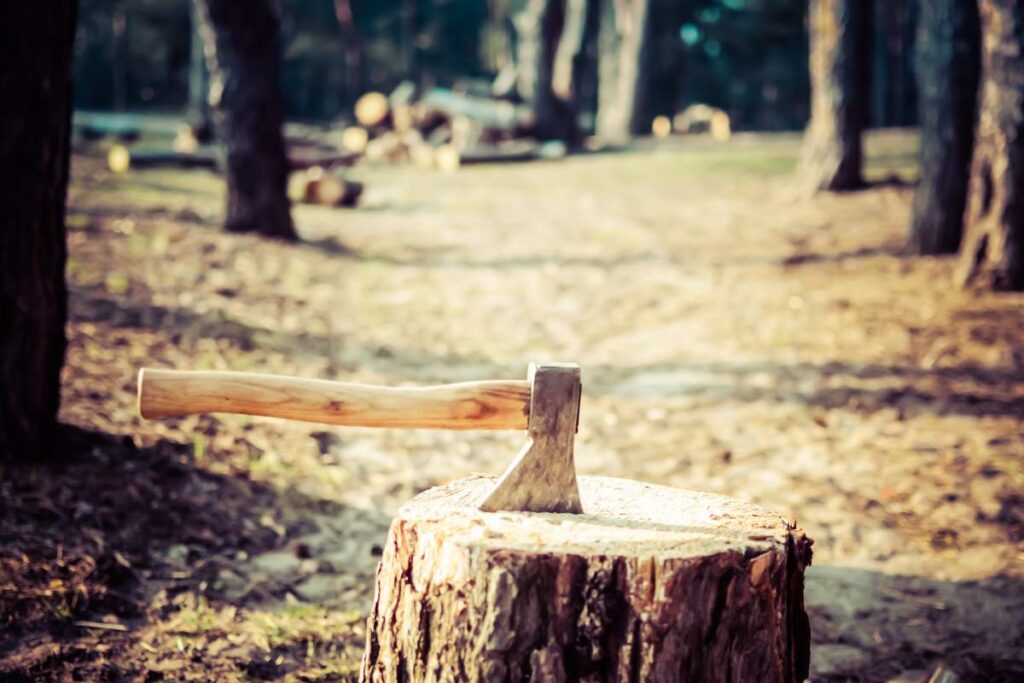
3. Water Management
Water Cycle Regulation: Trees play a role in the water cycle by absorbing and filtering rainwater. They help to replenish groundwater supplies and reduce surface runoff, which can lead to flooding. Removing trees can disrupt this balance, potentially leading to increased flood risks and reduced water quality.
Stormwater Management: Tree canopies intercept rainfall, which reduces the amount of water that reaches the ground directly. This helps to manage stormwater and decrease the likelihood of waterlogging and erosion. Without trees, stormwater runoff increases, which can overwhelm drainage systems and lead to flooding.
4. Social and Aesthetic Benefits
Community Well-being: Trees contribute to the aesthetic and recreational value of communities. They enhance landscapes, provide spaces for relaxation and recreation, and can improve mental health and well-being. Urban green spaces with trees are often more attractive and enjoyable for residents.
Property Values: Well-maintained trees can increase property values. They enhance curb appeal and create pleasant outdoor environments. Removing mature trees can diminish the attractiveness of a property and potentially lower its value.
5. Long-Term Considerations
Climate Change Mitigation: Trees are long-term carbon sinks, capturing and storing carbon dioxide over their lifetimes. By cutting down trees, you remove this important mechanism for climate change mitigation, making it harder to achieve long-term climate goals.
Regrowth and Replacement: While planting new trees can help replace those that are cut down, it takes time for young trees to grow and provide the same benefits as mature ones. Immediate removal of trees without adequate replanting can lead to a temporary loss of environmental and ecological benefits.
Protective Species Trees That Cannot Be Cut Down Without Authorisation in Australia?
In Australia, certain tree species are protected by law due to their ecological, cultural, or historical significance. Cutting down these trees without proper authorization is prohibited to preserve biodiversity and heritage. Protection varies by state and territory, but here are some key examples:
1. NSW (New South Wales)
Blackbutt (Eucalyptus pilularis): Often found in the coastal regions, this species is significant due to its role in providing habitat for native wildlife.
Sydney Blue Gum (Eucalyptus saligna): This tree is crucial for its role in the local ecosystem, providing habitat and food for various species.
Ironbark Species (Eucalyptus sideroxylon, Eucalyptus crebra): Known for their strong, durable wood, these trees are important for maintaining ecological balance.
In NSW, many trees are protected under the Local Land Services Act 2013 and the Environmental Planning and Assessment Act 1979. Local councils also have their own Tree Preservation Orders (TPOs) that provide additional protection.
2. VIC (Victoria)
Mountain Ash (Eucalyptus regnans): This tree is one of the tallest in the world and plays a crucial role in the forest ecosystem.
River Red Gum (Eucalyptus camaldulensis): Important for riparian zones and waterway health, it is protected in many areas.
Long-leafed Box (Eucalyptus goniocalyx): Protected in certain regions due to its ecological value.
In Victoria, tree protection is governed by the Planning and Environment Act 1987 and local council regulations. The Native Vegetation Regulations 2013 also set guidelines for the protection of native vegetation.
3. QLD (Queensland)
Bunya Pine (Araucaria bidwillii): Known for its large cones and cultural significance to Indigenous Australians.
Kauri Pine (Agathis robusta): Important for its timber and as a part of the rainforest ecosystem.
Cypress Pine (Callitris spp.): Several species are protected due to their ecological roles.
In Queensland, tree protection is covered under the Vegetation Management Act 1999 and local council regulations.
4. WA (Western Australia)
Jarrah (Eucalyptus marginata): This tree is valued for its hard wood and ecological significance.
Karri (Eucalyptus diversicolor): Known for its tall growth and role in the forest ecosystem.
Wandoo (Eucalyptus wandoo): Important for its ecological role and timber.
Western Australia protects native vegetation under the Wildlife Conservation Act 1950 and the Environmental Protection Act 1986. Local councils may also have additional regulations.
5. SA (South Australia)
Mallee Trees (various Eucalyptus spp.): These trees are crucial for maintaining desert and semi-arid ecosystems.
Southern Blue Gum (Eucalyptus globulus ssp. globulus): Significant for its habitat value and commercial use.
South Australia has regulations under the Native Vegetation Act 1991 and local council rules.
6. TAS (Tasmania)
Tasmanian Oak (Eucalyptus delegatensis, Eucalyptus regnans): Important for timber and habitat.
Huon Pine (Lagarostrobos franklinii): Extremely slow-growing and long-lived, this species is highly protected.
Tasmania’s tree protection laws are governed by the Forest Management Act 2013 and local council regulations.
7. ACT (Australian Capital Territory)
Snow Gum (Eucalyptus pauciflora): Known for its role in alpine ecosystems.
Yellow Box (Eucalyptus melliodora): Important for wildlife habitat and as a source of nectar.
In the ACT, tree protection is managed under the Tree Protection Act 2005 and local planning regulations.
Final Thought
Cutting down a tree involves several considerations, including its environmental, ecological, and social impact. You need to be sure that the decision to remove a tree is absolutely necessary.
If you find yourself in a situation where a tree must be removed but you’re unsure how to proceed or if it’s permissible, it’s wise to consult professionals.
For those in Perth, Western Australia, Lakeside Trees and Stumps offers comprehensive tree care services. They promote preservation with an ethical approach to managing and caring for trees, ensuring that decisions are made responsibly and sustainably.

